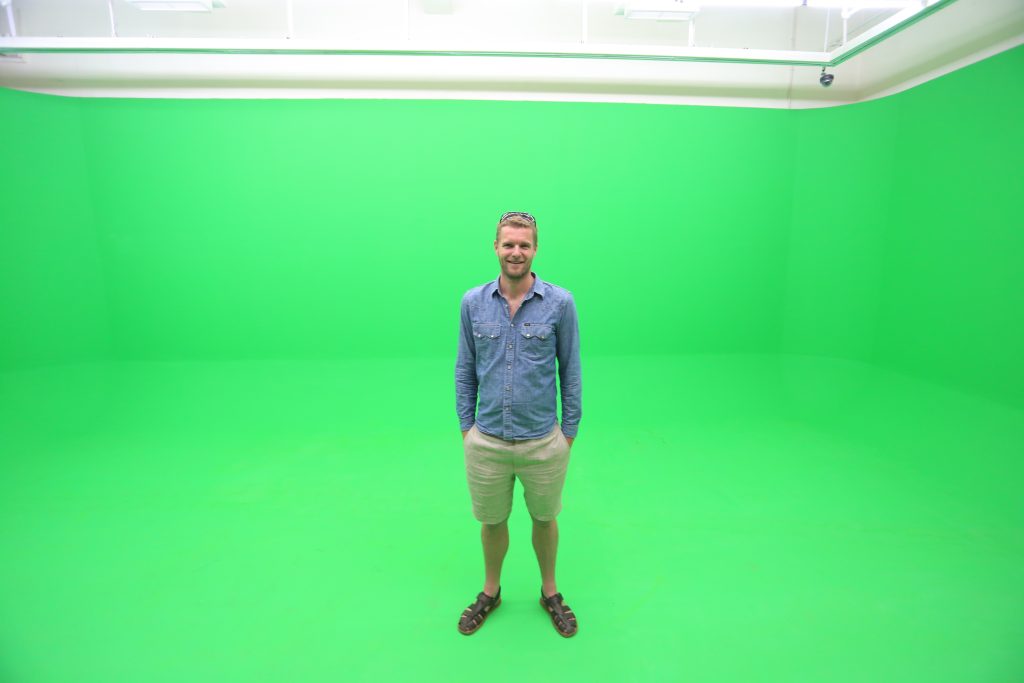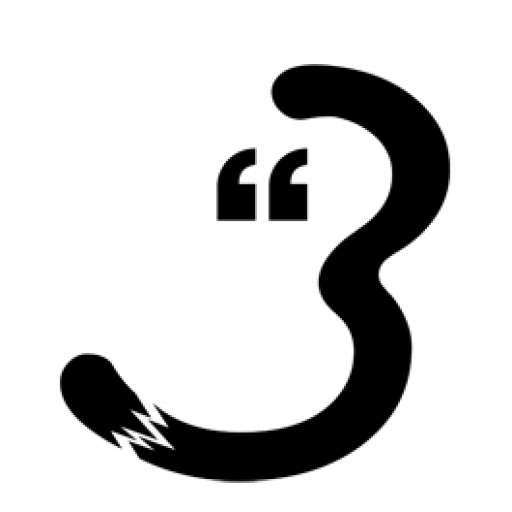
采访时间:2013年7月 Interview Date: July, 2013
弗洛伦泰因·霍夫曼
荷兰概念艺术家。曾在大尺幅画布上画了10年油画,后以荷兰鹿特丹为基地,开始从事在公共空间创作巨大造型物的艺术项目。大型艺术已经成为他的“签名”,“胖猴子”(The Fat Monkey 2010年在巴西圣保罗展出)、“大黄兔”(The Big Yellow Rabbit 2011年在瑞典厄勒布鲁展出)等等,最出名的是今年在香港和即将在北京展出的“大黄鸭”(Rubber Duck),也因此,他被称为“大黄鸭之父”。
Florentijn Hofman is a Dutch conceptual artist. He made oil paintings on large canvases for 10 years. Thereafter, based in Rotterdam, Netherlands, he began to work on giant models in public spaces. Large art works such as “The Fat Monkey” (exhibited inSao Paulo, Brazil in 2010) and “The Big Yellow Rabbit”(exhibitedin Orebro, Sweden in 2011) have become his signature works, among which “Rubber Duck”, which was exhibited in Hong Kong and scheduled to be exhibited in Beijing, is the most famous. That’s why he is popularly known as the “Father of Rubber Duck.”
https://www.florentijnhofman.nl
※
2013年于霍夫曼而言,是重要的一年,已过而立之年的他,和他的“大伙伴”们终于在中国国土上“站”了起来。尤其是前身与中国有不解之缘的“大黄鸭”,在距设计概念萌生的13年后,浮上了香港维多利亚港湾。
For Hofman, who is in his thirties, 2013 is an important year when he and his large creations finally gained recognition in the land of China. This was particularly so for “Rubber Duck”, whose conception was indelibly linked with China. It finally appeared in Victoria harbor in Hong Kong, 13 years after the design was conceived.
此前,大黄鸭也漂流过许多国家,但对大多数国人而言,它不过是人们“澡盆戏水”的童年回忆,而且在中国,“大”可不是什么了不起的事,尤其是在公共空间,尤其是充气装置。比如,很多中国商家都喜好在店门前矗立两个甚至多个十多米的充气柱子,天空还放飞五彩的氢气球,喜迎开业。而那些看似热闹的充气装置,无疑与艺术相差甚远,更像有气无力的金箍棒,仅有扯人眼球的功力而已。于是,当2013年7月,霍夫曼来到了拥有全球最大单体建筑——环球中心的成都,他和他的“大伙伴”们,一边受到的是热烈的欢迎,一边也备受争议。
Prior to China, Rubber Duck had toured many countries, but for some, the work merely represented an oversized bathtub toy. Particularly in China, large inflatable devices are commonplace in public places. To celebrate retail store openings, for example, large inflatable pillarsare a common sight amid a rising sea of colorful balloons. These contraptions attract attention, but have doubtlessly little affiliation with art. Therefore, when Hofman arrived at the world’s largest stand-alone building – the Global Center in Chengdu, in July 2013, he generated both warm welcome and controversy.
高1米93的霍夫曼崇尚“不婚主义”,身为三个小孩的老爹,却依旧像个大男孩。他喜欢搜罗世界各地的玩具,喜欢将艺术与公共空间发生联系。于是他将这些玩具扩大无数倍,并以横七竖八的形式放置于公共空间,倒地的巨型兔(The Big Yellow Rabbit )、过街的鼻涕虫(Slow Slugs)、拖鞋做的大猴子(The Fat Monkey),甚至在葡萄牙将弗朗西斯科·德阿尔梅达(Francisco De Almeida,约公元前1450至1510年,葡萄牙贵族、军人和首任印度总督)的雕像贴满了彩色的橡皮泥。
Hofman, who is 1.93-meter tall, advocates a “non-marriage doctrine. ” A father of three, he has the air of a big boy himself. He likes collecting toys from all over the world and connecting art with public spaces. This inspired him to create hugely magnified replicas of those toys, and displaying them unconventionally in public. His works include The Big Yellow Rabbit, which lay on its back in a town square, Slow Slugs which ascended steps towards a church, and The Fat Monkey, made from slippers. In Portugal, he even stuck colorful plasticine to the statue of Francisco de Almeida (1450 to 1510 BC, Portuguese nobleman, soldier and first Governor General of India).
这些创作手法,在拥有“全世界人均身高最高国度”之称、拥有开放艺术空间的荷兰,可谓意料之举。可当这些原本熟悉亲切的玩具,以庞然姿态出现时,难掩一种陌生,而这种似是而非的感觉便是艺术的魅力。霍夫曼说:“也许艺术家不是一个好词,但它代表发现世界的心。”
By some studies, the Dutch populace is statistically the tallest in the world. This fact, combined with the abundance of open art spaces in Holland, may shed some light on the creative impulses of Hofman. By displaying familiar toys in unfamiliar sizes the artist arouses a sense of awe from mundane objects. “Perhaps artist is not a good word, but it represents a heart that discovers the world”, Hofman says.
对话霍夫曼:公共空间,以大见小
Q:为什么艺术品的尺寸对你而言非常重要?
霍夫曼:大,首先就会抓住人们的视线,而且使人绕着这个作品走一圈,全面地观看。大型艺术作品不仅让公共空间变小了,而且让观看的人也变小了。我并不是将东西做大,而是把世界变小。
Q: Why is the size of artworksvery important to you?
Hofman: A large artwork will draw people’s attention at first sight and make them walk around the work and take an overall look of it. Large-scale artworks make not only public space, but also the viewer smaller. I’m not making things big, but making the world smaller.
Q:在城市建设进程中,越来越多的艺术作品介入公共空间,对两者的交融你有怎样的看法?
霍夫曼:荷兰的公共艺术非常蓬勃,政府资助艺术家探索、发展和创造。比如,建造一所房屋需要三四百万,那么1%的资金会投入到艺术创作当中。有时候我觉得荷兰丰富的文化环境发展太过了,有些作品很糟糕。这种1%的政策对中国艺术发展倒是挺不错的,而且在建设初期就可以将艺术家、舞蹈家、音乐家的想法融入创意和规划中。
Q: In the process of city construction, more and more works of art get placed in public spaces, what do you think of their combination?
Hofman: Public art is booming in the Netherlands where artists’ exploration, development, and creation are supported by the government. For example, if building a house costs three to four million Euros, then 1% of the cost will be used for artistic creation. Sometimes I think the rich cultural environment in the Netherlands is overdeveloped, and some works are awful. But this 1% policy is good for the development of Chinese art, and in the initial stageof construction, ideas of artists, dancers, and musicians can be integrated into creation and planning.
Q:你的好奇心很旺盛,在成都的短暂旅途中,你说得最多的词就是“why”,请问“Mr.Why”对成都的城市有怎样的感想?
霍夫曼:当车驶过天府大道时,我被两旁高大且奇形怪状的建筑震惊了。我感叹这个城市的发展是多么迅速,当我们面临这些建筑时,自己是多么渺小,人类是多么渺小。我刚才提到的“1%的政策”也并不适用于永久性的艺术。当代艺术是短暂的,充满不断变化的新鲜感的。我希望公共空间是大家的空间,是大人们的游乐园,是让大人也有孩子那样发现的眼睛。
Q: You are full of curiosity, in the short journeyin Chengdu, what you say the most is the word “why”. So “Mr. Why”, how do you like this city?
Hofman: When the car passed by Tianfu Avenue, I was impressed by those grand and fantastic buildings on both sides. I think this city develops so fast, when facing these buildings, we feel we are so small, and human-beings are so small. The “1% policy” I mentioned just now is not appropriatefor permanent art. Contemporary art is transient, and is full of changes and freshness. I hope that public space belongs to everyone and is an amusement parkfor grown-ups, in where they may discover cheerful things like children.
Q:你和你的作品去过很多国家和地方,甚至有些作品是因地制宜、落地而生,你的作品在哪个国家最具影响力?
霍夫曼:不同的国家有不同的工作方式,在巴西,人们会让你等上三天,在日本,等了一分钟便开始催促你了。我每天都像生活在梦里一样,我的工作就是跟很多人一起玩耍,我是一个玩耍的大孩子。最有影响力的国度,应该叫做网络,那是我的作品被见到、去到过最多的领域。很多人意外在网上看到我的作品图便以为了解它了,其实不然,这也是我为什么不停在世界奔波,让更多人可以真实地感知我的作品。
Q: You and your works have been to many countries and regions, and some of your works are even based on and created for those places; so, on which country do your works have the most influence?
Hofman: Different countries have different ways of working. In Brazil, people will keep you waiting for three days, while in Japan, people will urge you after waiting for one minute. Every day of my life is like living in a dream, and my job is to play with a lot of people, I am a big kid who is having fun. The country in which my works have the most influence on should be called the Internet, where my works are watched and displayed the most number of times. Many people see my works on the Internet and think they have understood them, but in fact, they have not. That’s why I keep travelling around the world to make people truly understand my works.
Q:其实你有很多作品都有特色,可在唯独“大黄鸭”在中国火了,大家还称你为“鸭爸爸”。你觉得“大黄鸭”在中国受到追捧,是它所传递的爱被大家了解,还是一个从众的心态?
霍夫曼:我认为两者都有,更多是作品自身的原因。我会偷偷跑到作品现场,听听大家的意见,我听到了非常多不同的声音,大黄鸭是一个充满异议的作品。
Q: In fact, many of your works are distinctive, but only the “Rubber Duck” is popular in China, and you are called “Daddy Duck.” Do you think the popularity of “Rubber Duck” is because of everyone understanding the love it conveys, or just out of a herd mentality?
Hofman: Both are factors, but I think it is more because of the work itself. When I sneak to the places where my works are displayed and hear people’s opinions, I hear many different voices, and Rubber Duck is one of my controversial works.
Q:有人质疑你的作品不过是“小黄鸭”的再放大,甚至觉得是一种侵权。你是怎样看待这个问题?
霍夫曼:作为一个艺术家,必须秉承坦诚和开放的态度。我的工作室有我从世界各地搜集的玩具,我受它们启发,将他们扩大,并改变它们的外貌和材料,这是完全不一样的艺术,我强调公共空间的体积和就地取材。我不是第一个做“放大”的艺术家,但是我是第一个放大小黄鸭的艺术家。小黄鸭的形象早已存在了几百甚至上千年了,当我想要做“大黄鸭”项目时,我找到几百只鸭子的形象,后来找到了“香港制造”的这一只。
Q: Some people question that your work is just the re-amplification of “Little Rubber Duck” and they even think it is a tort. What do you think of this issue?
Hofman: As an artist, I must be frank and open. There are toys collected from all over the world in my studio. I was inspired by them so I amplify them and change their appearance and materials. This is a completely different art in which I emphasize volume of public space and use of local materials. I’m not the first “amplifying” artist, but I am the first artist to amplify Little Rubber Duck. The image of little ducks has existed for hundreds or even thousands of years. When I decided to make the “Rubber Duck”, I found hundreds of images of ducks until I found the one “Made in HK”.
链接LINK
1992年,一艘装有2.9万浴盆玩具、且大部分为黄色橡皮鸭的货轮从中国出发,计划穿越太平洋抵达美国华盛顿州的塔科马港,途中遇上海上风暴,货柜坠入大海并破裂。经过15年的漂流和洋流作用,黄色橡皮鸭在美国和英国海岸登陆。
In 1992, a cargo shiploaded with 29,000 bathtub toys, most of which were yellow rubber ducks, set out from China, planning to cross the Pacific to reach Port of Tacoma in Washington State, USA. On the way, the ship encountered a storm, and the containers fell into the sea and ruptured. After fifteen years of drifting with the currents, those rubber ducks finally reached the shores of the U.S. and the UK.
※
All rights reserved, contact Lenore to know more.
